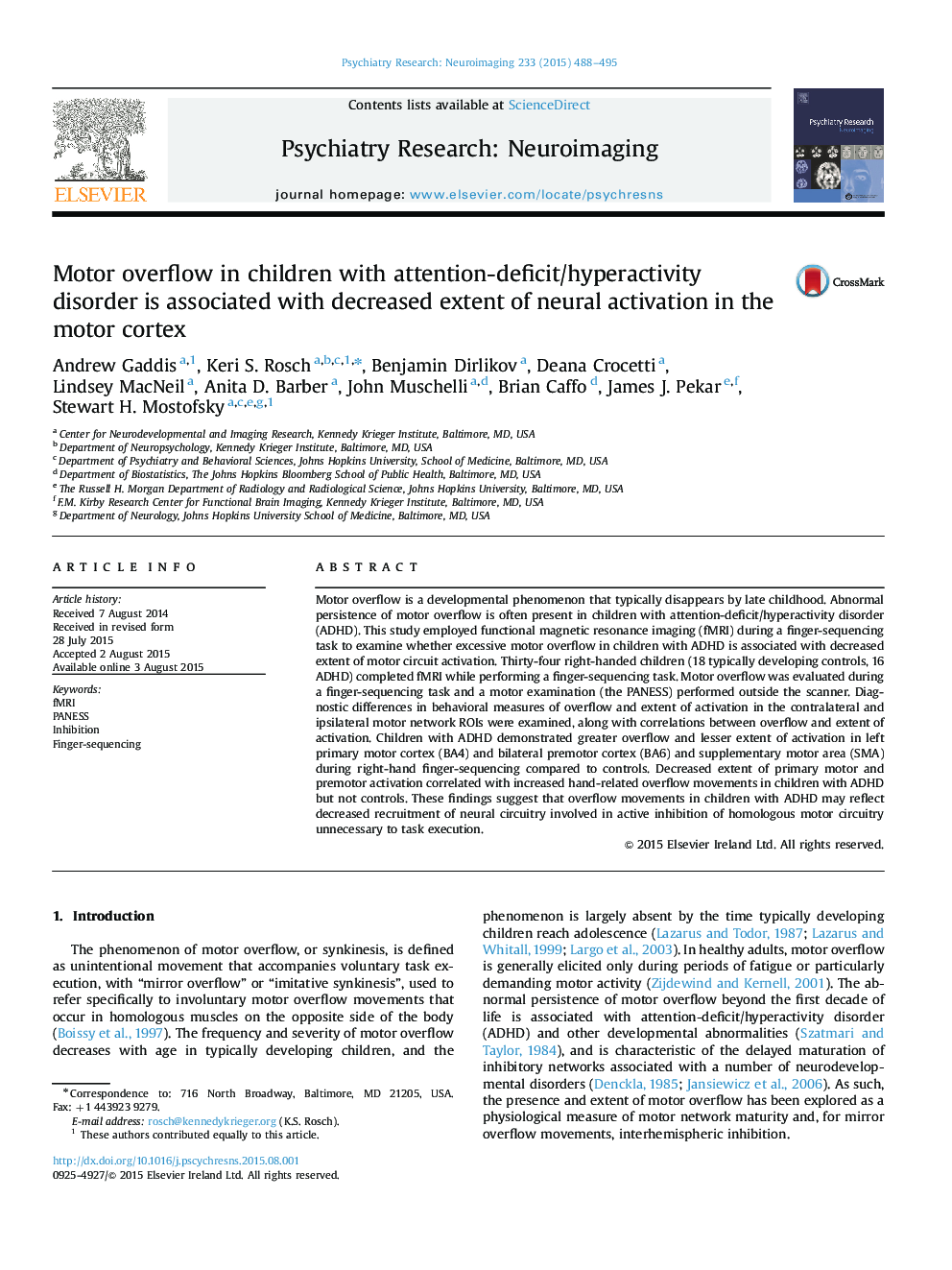| Article ID | Journal | Published Year | Pages | File Type |
|---|---|---|---|---|
| 334740 | Psychiatry Research: Neuroimaging | 2015 | 8 Pages |
•Children with ADHD demonstrated greater overflow.•Children with ADHD showed reduced activation in motor and premotor cortices.•Decreased neural activation correlated with increased overflow in the ADHD group.
Motor overflow is a developmental phenomenon that typically disappears by late childhood. Abnormal persistence of motor overflow is often present in children with attention-deficit/hyperactivity disorder (ADHD). This study employed functional magnetic resonance imaging (fMRI) during a finger-sequencing task to examine whether excessive motor overflow in children with ADHD is associated with decreased extent of motor circuit activation. Thirty-four right-handed children (18 typically developing controls, 16 ADHD) completed fMRI while performing a finger-sequencing task. Motor overflow was evaluated during a finger-sequencing task and a motor examination (the PANESS) performed outside the scanner. Diagnostic differences in behavioral measures of overflow and extent of activation in the contralateral and ipsilateral motor network ROIs were examined, along with correlations between overflow and extent of activation. Children with ADHD demonstrated greater overflow and lesser extent of activation in left primary motor cortex (BA4) and bilateral premotor cortex (BA6) and supplementary motor area (SMA) during right-hand finger-sequencing compared to controls. Decreased extent of primary motor and premotor activation correlated with increased hand-related overflow movements in children with ADHD but not controls. These findings suggest that overflow movements in children with ADHD may reflect decreased recruitment of neural circuitry involved in active inhibition of homologous motor circuitry unnecessary to task execution.
